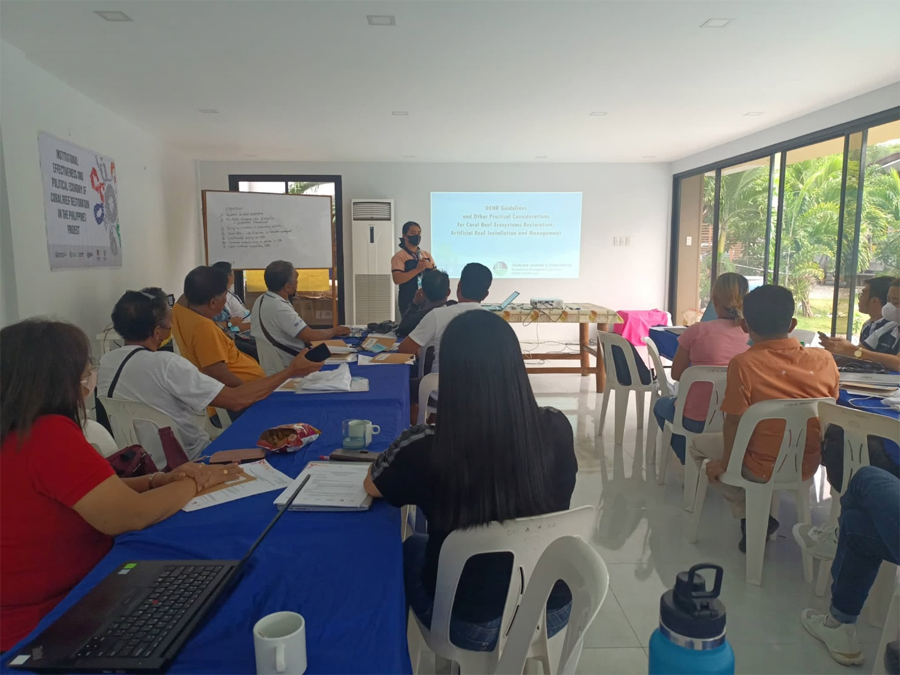
The DENR CENRO Lipa through the Conservation and Development Section participated in the Co-Creation Workshop for the Institutional Effectiveness and Political Economy of Coral Reef Restoration in the Philippines Project held at Cerca Parola Resort, Lobo, Batangas. The said program was a component of the project entitled “Institutional Effectiveness and Political Economy of Coral Reef Restoration in the Philippines” and was spearheaded by Marine Environment and Resources Foundation Inc. in collaboration with University of the Philippines-Marine Science Institute with participation from Macquarie University, Southern Cross University, and University of Technology Sydney, funded by the Australian Centre for International Agricultural Research (ACIAR).
The co-creation workshop focused on identifying policy agendas and management initiatives that could enhance and strengthen Lobo’s coral reef protection and management of marine and fisheries resources. Together with various stakeholders, the workshop established interventions to address governance gaps that may have direct and indirect impacts to coral reef restoration.
EMS I Charlene Jovanne Constantino discussed the DENR Guidelines and Other Practical Considerations for Coral Reef Ecosystems Restoration/Artificial Reef Installation and Management. Her discussion provided understanding for establishment and management of structures, coral reef restoration sites. She highlighted the Biodiversity Management Bureau (BMB) Technical Bulletin No. 2019-03 entitled General Considerations for Coral Reef Ecosystems Restoration/Rehabilitation which was anchored on the DENR Administrative Order No. 2016-26 or the Guidelines for the Implementation of the Coastal and Marine Ecosystems Management Program (CMEMP).
The Municipality of Lobo, initiated the Artificial Coral Reef Project in support to their marine productivity program since its first launch on year 2014. To date, there were already an approximate of 6,000 artificial reef blocks installed along its coastal barangays, and were being maintained and enjoyed by the local government and coastal communities.
- Details
- Parent Category: News & Events
- Category: Regional Releases
- Published: 20 December 2022